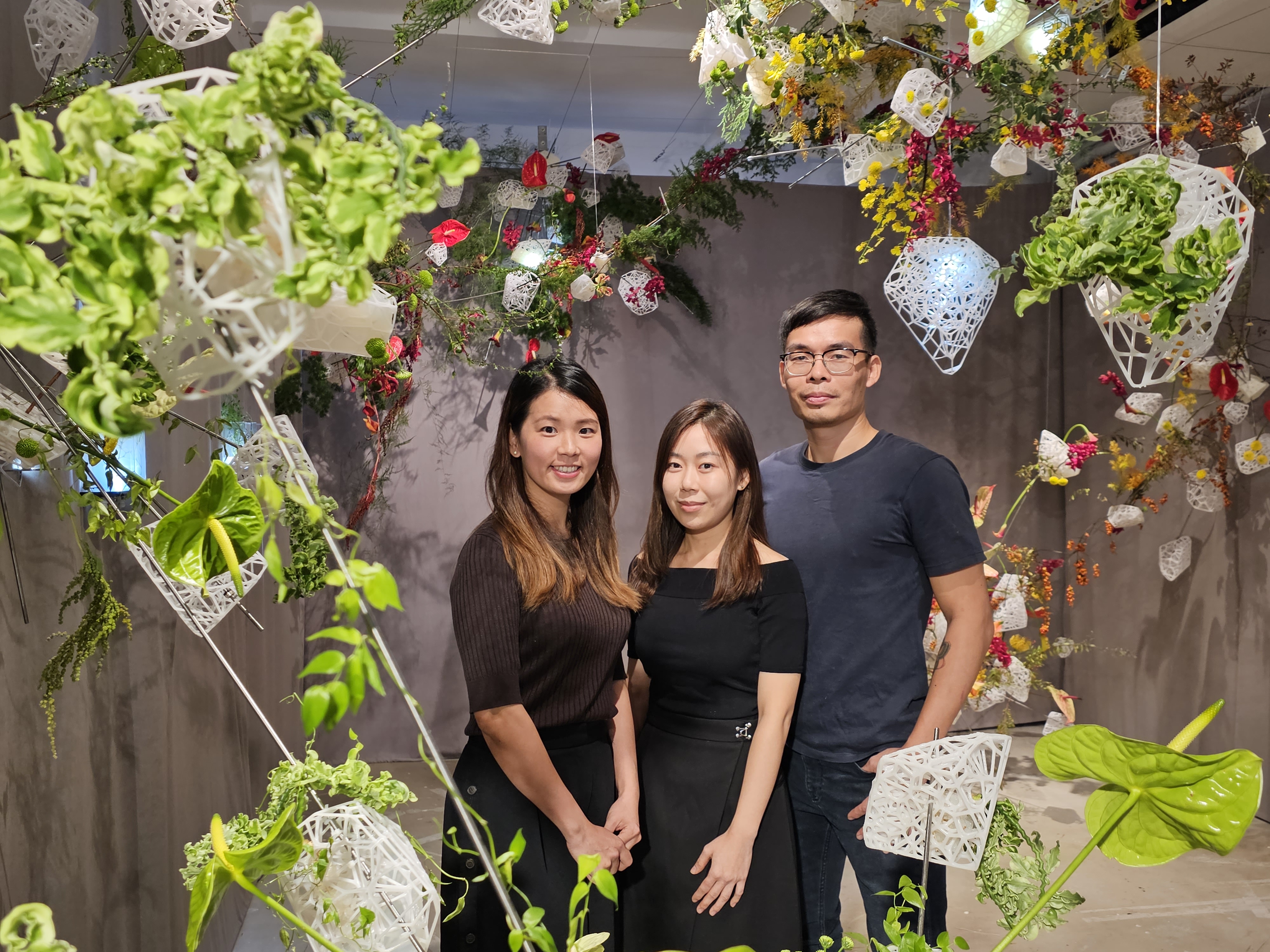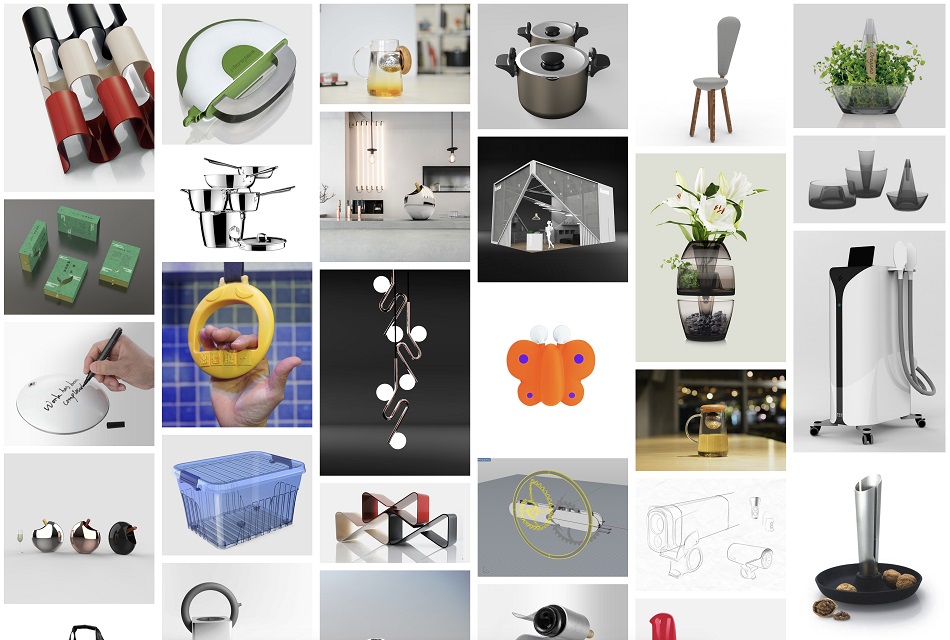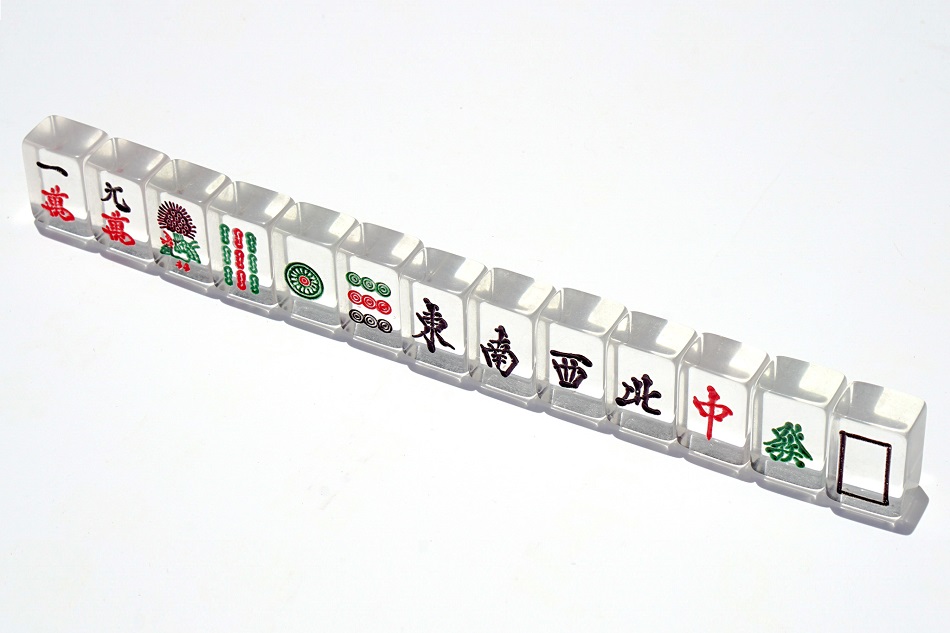Design Feature #55
The New Soil for Neo Floral Design
Future Soil

Text: TL ling
Translated by: Joel Wong
Image: TL Ling & Future Soil
Yvonne is a florist, and it is a no-brainer for her to open her shop. But not so typical for the other founder of the shop, Arthur, who is an architect in the first place. Arthur sees the connection between architecture and floral design as both share the art and beauty of lines and curves, " Architectural design has a lot of geometry, shapes, etc., and will reference different things in nature. Floral design also involves geometric structures to support the plants to grow."
Arthur and his friend Carolyn, an architectural designer, took Yvonne's floral classes before, and the trio collaborated on some floral installations at a flower shop. They figured using traditional materials such as wooden strips to secure the main structure was the key to such craft, but it was also very time-consuming. Even when the floral foam was dried and watered again, the effect was unpleasant. So, they began to think: Can we use other materials to replace the foam? What about using 3D printing to design the main structure?

From left: Arthur Cheung, Carolyn Tam and Yvonne Wong.
When polymers meet 3D printing
To find a legitimate answer, the trio worked very hard inside their studio for the past few months, with a whole table of somewhat 50 small plants in cups, and their research was non-stop. Arthur laughed at the process: "We were like doing serious scientific experiments!" Carolyn explained that they use a polymer to replace traditional floral foam. "Originally in powder form, it can absorb solvents, such as water. "She held up a pile of polymer, which looked like a slap of transparent gel-ish stuff. "After it expands, it will be in a more stable shape. It can absorb solvent up to 500 times its weight. "The water capacity is sufficient for floral designs. Yvonne points out the prominent advantages: "For example, if you use floral foam, you must water it every couple of days. But with polymer, you only need to water it every ten days or so."

The three of them are in the studio as if they were doing a scientific experiment.
"Polymer" is not a commonly recognised term. Arthur explained that polymer has been around for a long time; for example, it is used in diapers: "It may also be used in some technical fields with a different formula of polymers. "There are numerous species of plants on earth, so you might need a different kind of polymer to suit a specific plant to grow. There is no one-size-fits-all formula. Yvonne, who traveled to France and Korea to study floral design, gained plenty of knowledge about plants, "But I don't know them all, so for this polymer research, I did a lot of data collection with Arthur and Carolyn to study what different plants need. "The polymer must be infused with water and nutrients to obtain a specific pH value."
To optimize the outcome, the trio purchased three home-used 3D printers to make a precisely calculated web-like network structure, aiming for the plants to insert into the polymer's top layer, where the density is the highest. "When helping the plants to grow, the roots can grasp the network structure, with the base part of the polymer being less dense to make the whole structure lighter."

Floral artefacts designed in polymer and 3D printed structures.

Yvonne demonstrates how easy it is to insert flowers into the gel polymer.
"Future Soil" exhibition
The outcome of Arthur, Yvonne, and Carolyn's works are now on display at PMQ's deTour 2023 with their floral installation exhibition titled "Future Soil" With more than 20 types of plants on display at the exhibition, they are planted with polymers and 3D printed structures, representing a brand-new floral design. Arthur and Yvonne agreed: "The exhibition aims for people to feel the seasons of nature, so there are green flowers symbolizing spring, yellow flowers representing summer, etc."

"Future Soil" is a collaboration between the three.
All you "plant lovers" can notice the rarely seen in Hong Kong "Euphorbia tithymaloides smallii" at the exhibition area. "They are mostly produced in South America or Cuba and have graceful shapes. Generally, the roots of succulents are very short, but white bird corals have many and abundant roots." Yvonne added that transparent polymers are different from floral foam, allowing people to witness the growth of the roots. Coupled with the particular lighting effects of the exhibition hall, displaying the 3D-printed structure with enormous beauty: "Traditional floral design use metal wires and wooden strips as the base to support the plants, but sometimes they don’t look elegant when exposed, you might need to cover it with flowers. Using 3D printed structure to display can resolve this problem easily."
The base they use for 3D printing is a resin derived from soybean, which is as environmentally friendly as polymers and is biodegradable. However, the trio emphasized that "Future Soil" does not mean abandoning the old and embracing the new tech but hoping such innovation can merge with traditional crafts and develop further. For instance, Carolyn said using 3D printing technology to design structures is more beginner friendly. Regarding the application of such tech in architectural design, Arthur also expresses his expectations: "There is still a long way to go to develop further what we are doing, but I would imagine if the columns of a building are manufactured in 3D printed structure and polymers, then plants can grow directly within them. Nowadays, buildings' green walls/plant walls are mostly embedded with devices on the exterior wall surface, allowing plants to cling on and grow. 3D printing tech with polymers may become groundbreaking and even integrate such green walls to go all the way to the ceiling."



deTour 2023 "Future Soil" Exhibition
Now to 3 December (11:00 - 20:00)
Room S504, 5/F, PMQ A
For details: https://detour.hk/2023/en/activity/future-soil


